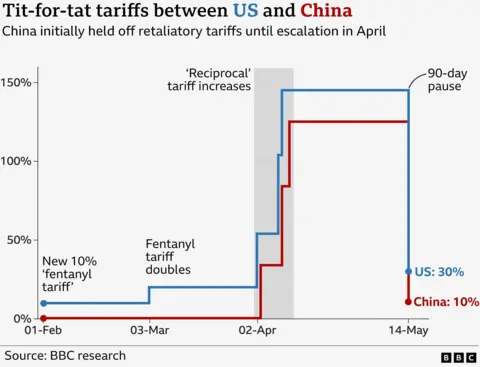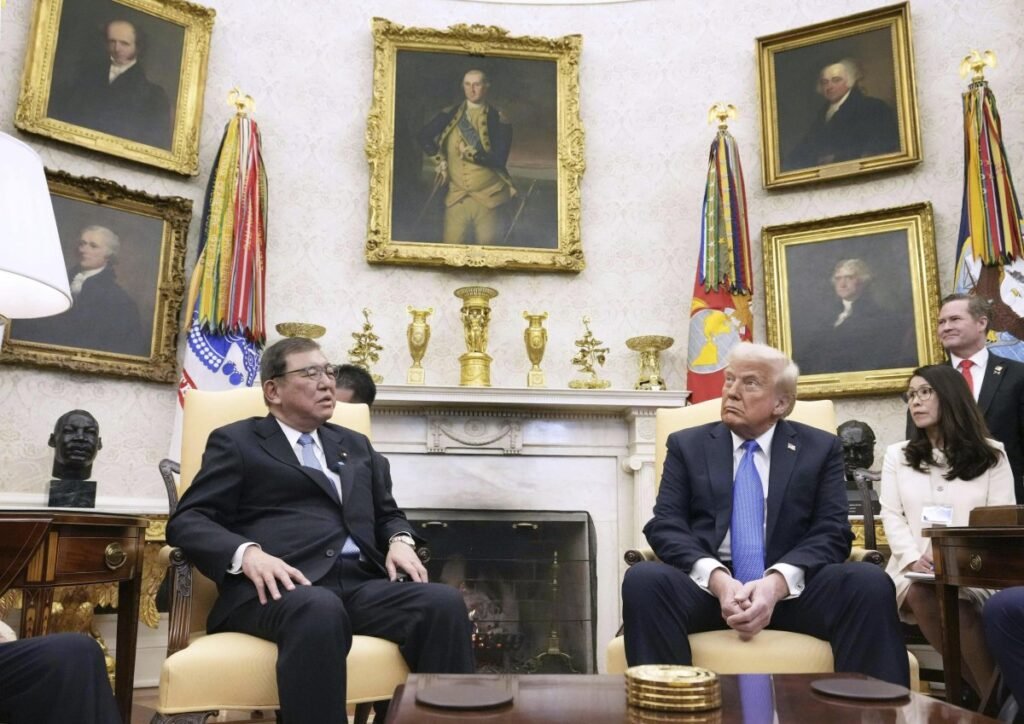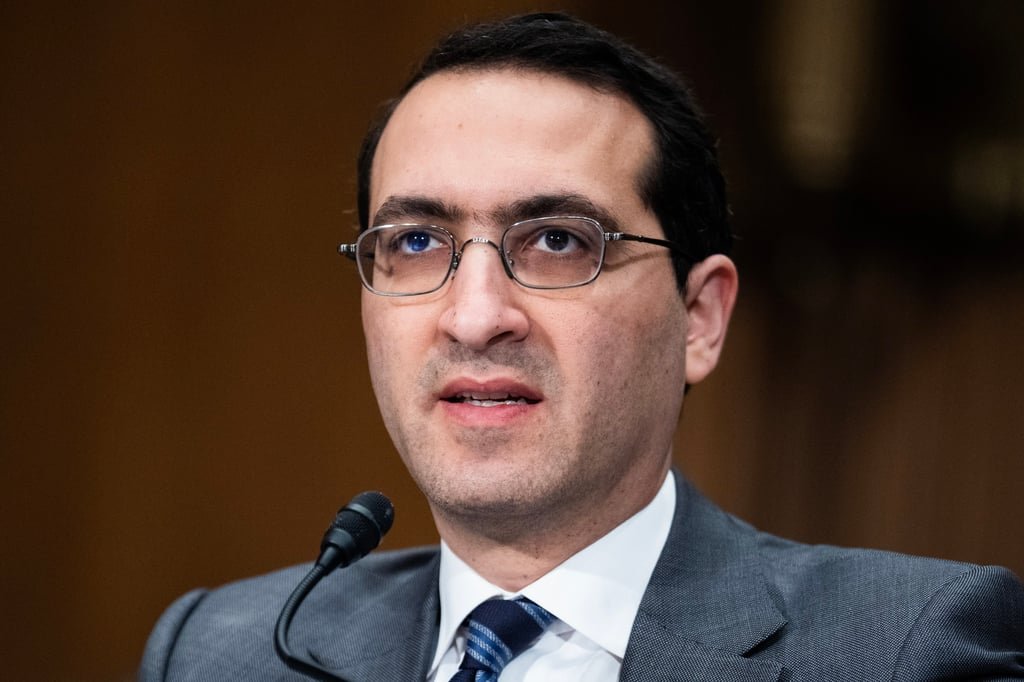Business reporter

 Getty Images
Getty ImagesThe US and China say they have agreed in principle to a framework for de-escalating trade tensions between the world’s two biggest economies.
US Commerce Secretary Howard Lutnick said the deal should result in restrictions on rare earth minerals and magnets being resolved.
Both sides said they would now take the plan to their country’s presidents – Donald Trump and Xi Jinping – for approval.
The announcement came after two days of negotiations in London between top officials from Beijing and Washington.
Chinese exports of rare earth minerals, which are crucial for modern technology, were high on the agenda of the meetings.
Last month, Washington and Beijing agreed a temporary truce over trade tariffs but each country has since accused the other of breaching the deal.
The US has said China has been slow to release exports of rare earth metals and magnets which are essential for manufacturing everything from smartphones to electric vehicles.
Meanwhile, Washington has restricted China’s access to US goods such as semiconductors and other related technologies linked to artificial intelligence (AI).
“We have reached a framework to implement the Geneva consensus,” Lutnick told reporters.
“Once the presidents approve it, we will then seek to implement it,” he added.
The new round of negotiations followed a phone call between Donald Trump and China’s leader Xi Jinping last week which the US President described as a “very good talk”.
“The two sides have, in principle, reached a framework for implementing the consensus reached by the two heads of state during the phone call on June 5th and the consensus reached at the Geneva meeting,” China’s Vice Commerce Minister Li Chenggang said.


When Trump announced sweeping tariffs on imports from a number of countries earlier this year, China was the hardest hit. Beijing responded with its own higher rates on US imports, and this triggered tit-for-tat increases that peaked at 145%.
In May, talks held in Switzerland led to a temporary truce that Trump called a “total reset”.
It brought US tariffs on Chinese products down to 30%, while Beijing slashed levies on US imports to 10% and promised to lift barriers on critical mineral exports. It gave both sides a 90-day deadline to try to reach a trade deal.
But the US and China have since claimed breaches on non-tariff pledges.
US Trade Representative Jamieson Greer said China had failed to rollback restrictions on exports of rare earth magnets.
Beijing said US violations of the agreement included stopping sales of computer chip design software to Chinese companies, warning against using chips made by Chinese tech giant Huawei and cancelling visas for Chinese students.
Ahead of this week’s talks, the Chinese Ministry of Commerce said on Saturday that it had approved some applications for rare earth export licences, although it did not provide details of which countries were involved.
Trump said on Friday that Xi had agreed to restart trade in rare earth materials.







